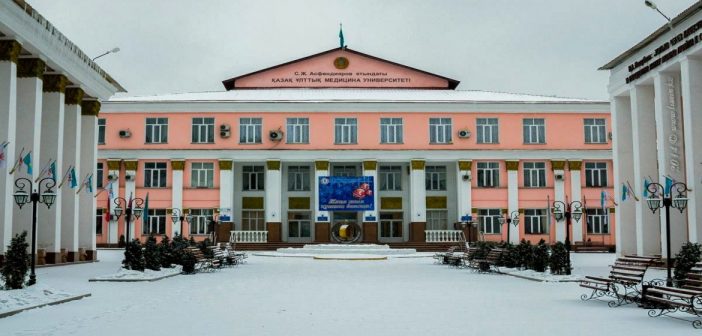For decades, the United States has been the undisputed leader in attracting Indian students seeking international education, particularly in fields like medicine and engineering. However, a recent shift is underway, with a growing number of Indian students opting for universities in former Soviet states like Russia, Ukraine, Kazakhstan, and Kyrgyzstan. This eastward trend deserves closer examination, as it sheds light on the evolving landscape of international education and the factors influencing student choices.
Shifting Tides: The Decline of US Dominance
Traditionally, the US education system held immense appeal for Indian students. The allure of prestigious universities, globally recognized degrees, and potential immigration opportunities drew a steady stream of aspiring professionals. However, a multitude of factors are contributing to a decline in this trend.
The rising cost of education in the US is a significant deterrent. A 2022 report by College Board revealed that average tuition and fees at US private universities reached a record high of $43,775 for the 2021-2022 academic year. Coupled with the increasingly expensive cost of living, studying in the US can be financially prohibitive for many Indian students.
Another significant factor influencing the shift is the tightening of US immigration policies. The H-1B visa, which allows skilled foreign workers to work in the US, has become more challenging to obtain in recent years. This perceived uncertainty regarding post-graduation employment prospects in the US discourages some students from undertaking the investment of studying there.
The Allure of the East: Why Former Soviet States are Gaining Traction
Several factors make former Soviet states attractive destinations for Indian students seeking higher education.
Affordability: Universities in these countries offer significantly lower tuition fees compared to the US. For instance, tuition fees for medical programs in some Eastern European universities can be as low as $5,000 to $7,000 per year, a stark contrast to the upwards of $50,000 per year charged by some US medical schools. This affordability makes them a viable option for a wider range of Indian students, especially those from middle-class backgrounds.
Focus on STEM fields: Universities in former Soviet states have a strong reputation for science, technology, engineering, and mathematics (STEM) education. These programs often follow a rigorous curriculum with a practical approach, preparing students well for the global workforce. This focus on STEM fields aligns perfectly with the aspirations of many Indian students seeking career opportunities in these high-demand sectors.
Medium of Instruction: Many universities in former Soviet states offer programs taught in English, eliminating the language barrier for Indian students. This accessibility is crucial, as it allows them to focus on their studies without the added pressure of learning a new language.
Recognition of Degrees: Medical and engineering degrees awarded by reputable universities in these countries are recognized internationally, including in India. This ensures that upon graduation, students can pursue careers in India or abroad without facing additional hurdles in credential evaluation.
Similarities in Educational Systems: The educational systems in some former Soviet states share similarities with the Indian system. This familiarity can ease the transition for Indian students, making them feel more comfortable and prepared for their academic journey.
Proximity and Cultural Connections: The geographical proximity of these countries to India offers shorter travel times and potentially lower travel costs compared to destinations like the US or Europe. Additionally, some former Soviet states share historical and cultural connections with India, making the adaptation process potentially smoother.
The Rise of Asian Educational Hubs
Beyond former Soviet states, other Asian countries are emerging as attractive destinations for Indian students. Countries like Singapore, China, and Japan have invested heavily in their higher education sectors, offering world-class universities and scholarship programs specifically targeting international students. While these destinations may be more expensive than Eastern Europe, they offer a more diverse cultural experience and potentially stronger industry connections for graduates.
The Indian Government’s Role
The Indian government is also playing a role in shaping the landscape of international education for Indian students. Initiatives like the Study in India program aim to attract international students to Indian universities, fostering a two-way flow of knowledge and cultural exchange. Additionally, government scholarships for studying abroad can help offset costs and encourage students to consider a wider range of destinations, including those in Asia.
Looking Ahead: A Multifaceted Landscape
The trend of Indian students choosing former Soviet states for higher education is likely to continue in the near future. However, it is crucial to acknowledge that the landscape of international education is constantly evolving. The rise of Asian educational hubs, combined with potential policy changes in the US, will further influence student choices.
The Bottom Line
The eastward shift in student preferences highlights the increasing competitiveness of the international education market. Universities worldwide are actively wooing international students, offering attractive programs and financial aid packages.
The Road Ahead: Challenges and Opportunities
While the eastward trend presents exciting opportunities for Indian students, there are challenges to consider:
- Quality Variations: While some universities in former Soviet states boast a strong reputation, quality variations exist. Thorough research and accreditation verification are essential before enrolling.
- Language Barriers: Despite the availability of English-taught programs, some universities may use a mix of languages for instruction. Adapting to this can be demanding for students.
- Limited Research Opportunities: Research facilities and funding in some universities might be less developed compared to US institutions. This can impact students seeking research-oriented postgraduate programs.
- Limited Career Options in Host Countries: While degrees are recognized internationally, job opportunities for graduates within the host countries themselves may be limited, especially for those without local language proficiency.
Emerging Considerations
Several other factors will influence student decisions in the coming years:
- Post-Graduation Work Opportunities: Countries with streamlined work visa processes and clear pathways to permanent residency will hold greater appeal.
- Focus on Innovation and Entrepreneurship: Universities that foster innovation and entrepreneurship will attract students seeking to translate their education into practical ventures.
- Scholarship Opportunities: Government scholarships and university-specific financial aid programs will continue to play a significant role in making international education more accessible.
A Well-Informed Choice
For Indian students, the decision to pursue higher education abroad should be based on a comprehensive evaluation. Factors like program quality, affordability, career prospects, living costs, and the overall cultural fit should be carefully considered. Educational consultancies and online resources can provide valuable guidance in navigating the vast array of options available.
Conclusion
The eastward shift in student preferences signifies a new chapter in international education for Indian students. While the US remains a prominent destination, the affordability, strong academic foundation, and international recognition of degrees offered by universities in former Soviet states are making them increasingly attractive alternatives. Looking ahead, a well-informed approach that considers individual aspirations, program quality, and long-term career goals will be critical for Indian students to navigate the evolving landscape of international education and achieve academic success on the global stage.





